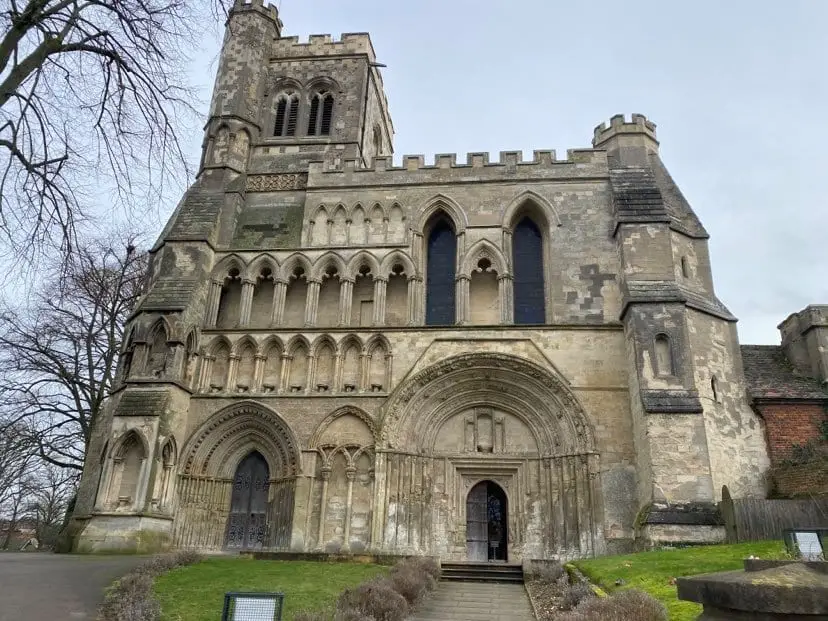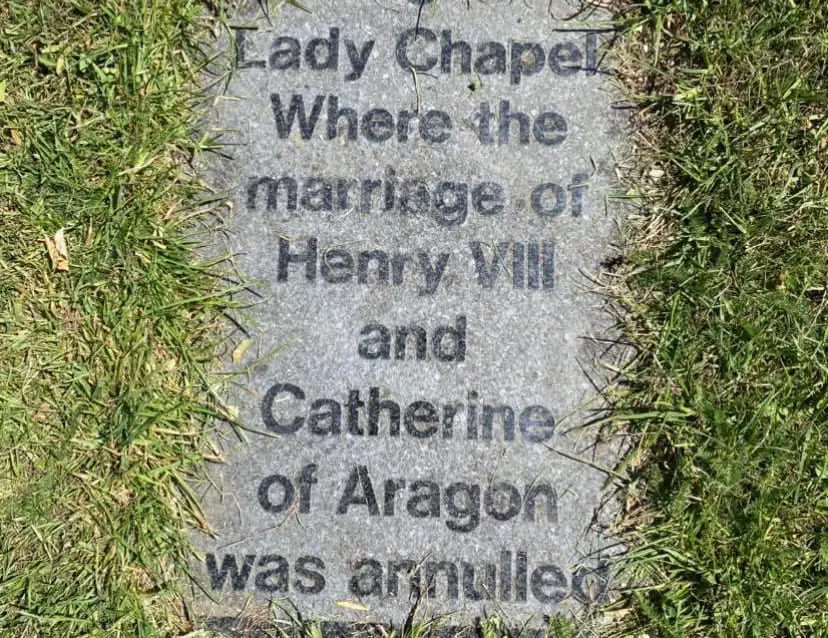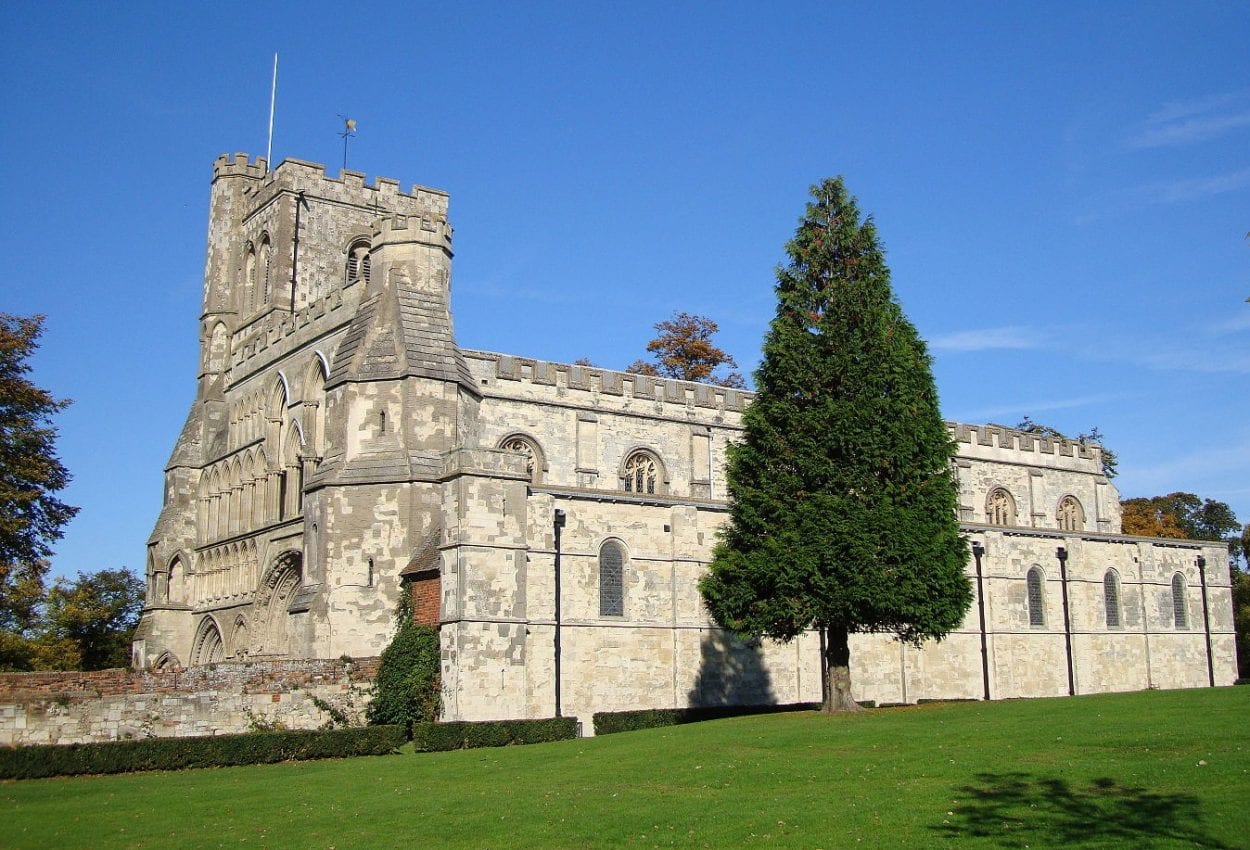The Priory Church of St Peter (Dunstable Priory) is the remaining nave of a former Augustinian priory church and monastery, that today is part of the Archdeaconry of Bedford, located within the Diocese of St Albans in the town of Dunstable, England.
The Augustinian priory of Dunstable was founded in the late 12th century AD by King Henry I (also known as Henry Beauclerc), who also granted the priory all such liberties and rights in the town of Dunstable and a quarry at Totternhoe.
Around the same time, Henry also constructed a royal palace known as Kingsbury, directly opposite the priory on, or near the site where the Old Palace Lodge now stands in Church Street. The palace was mainly used by Henry for celebrating Christmas, with consecutive monarchs gifting the palace for the disposal of the priory.
The priory attracted many pilgrims as they made their way to the shrine of Alban, and over the following centuries expanded to include several monastic buildings consisting of a dormitory, an infirmary, a hostel, stables, workshops, bakehouse, brewhouse, and buttery.
It was on the 23rd May 1533 that the priory would be witness to an event so significant in English history, that it would shape the direction and religious identity of the English church.
Henry VIII had asked the Catholic Church to invalidate his marriage to Catherine of Aragon, on the grounds that their marriage had been wrong in the eyes of God. Catherine had previously been married to Henry’s older brother Arthur Tudor, which Henry used as an argument for an annulment through an interpretation of the bible, that “if a man marries his brother’s wife, the couple will be childless”.

As Catherine’s nephew was Charles V, the Holy Roman emperor, Pope Clement VII would not accede to Henry’s wishes and forbade Henry to marry again before a decision was given in Rome.
In response, Henry instructed Archbishop Cranmer, together with the bishops of Winchester, London, Bath, and Lincoln to judge their royal master’s “grete and weightie cause”. The bishops met in the Lady Chapel of the conventual church at Dunstable Priory, resulting in the pronouncement that the marriage between Henry VIII and Catherine of Aragon to be null and void.

In 1534, Henry also made himself the supreme head of the church in his lands by the Act of Supremacy and commissioned the Valor Ecclesiasticus to survey the finances of the church in England, Wales, and English controlled parts of Ireland. This resulted in the dissolution of the monasteries to appropriate their income, assets, and lands to be sold off for the benefit of the crown.
Although the church and priory at Dunstable were closed in January 1540, they had initially survived the destruction of the dissolution, as the intention was to create a see at Dunstable with the priory church serving as its cathedral. However, the scheme for the creation of new bishoprics and the elevation of Dunstable was abandoned, and the priory (except for the parochial nave which still stands) was plundered for its assets and left in ruins.
Header Image Credit : Public Domain





